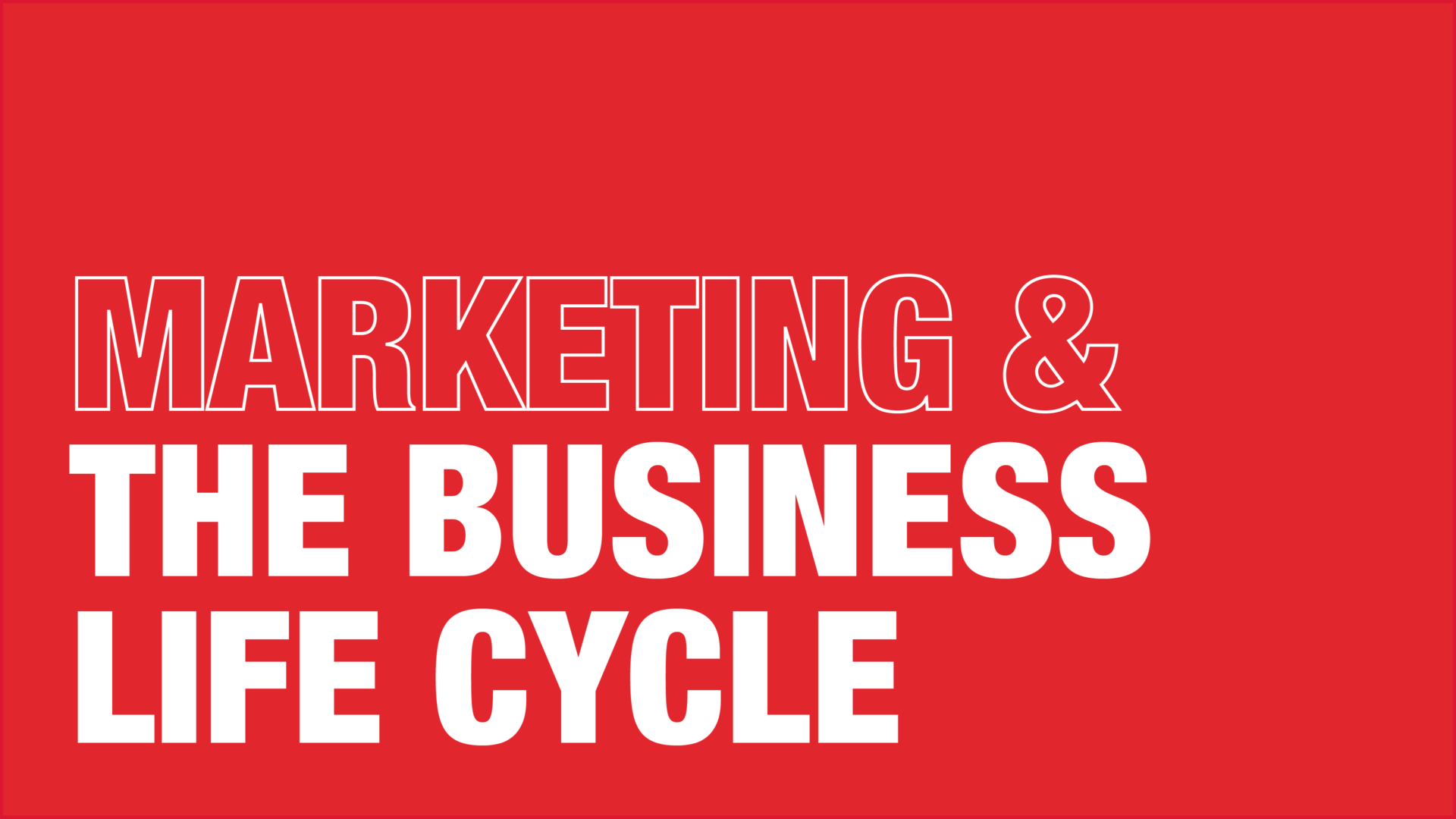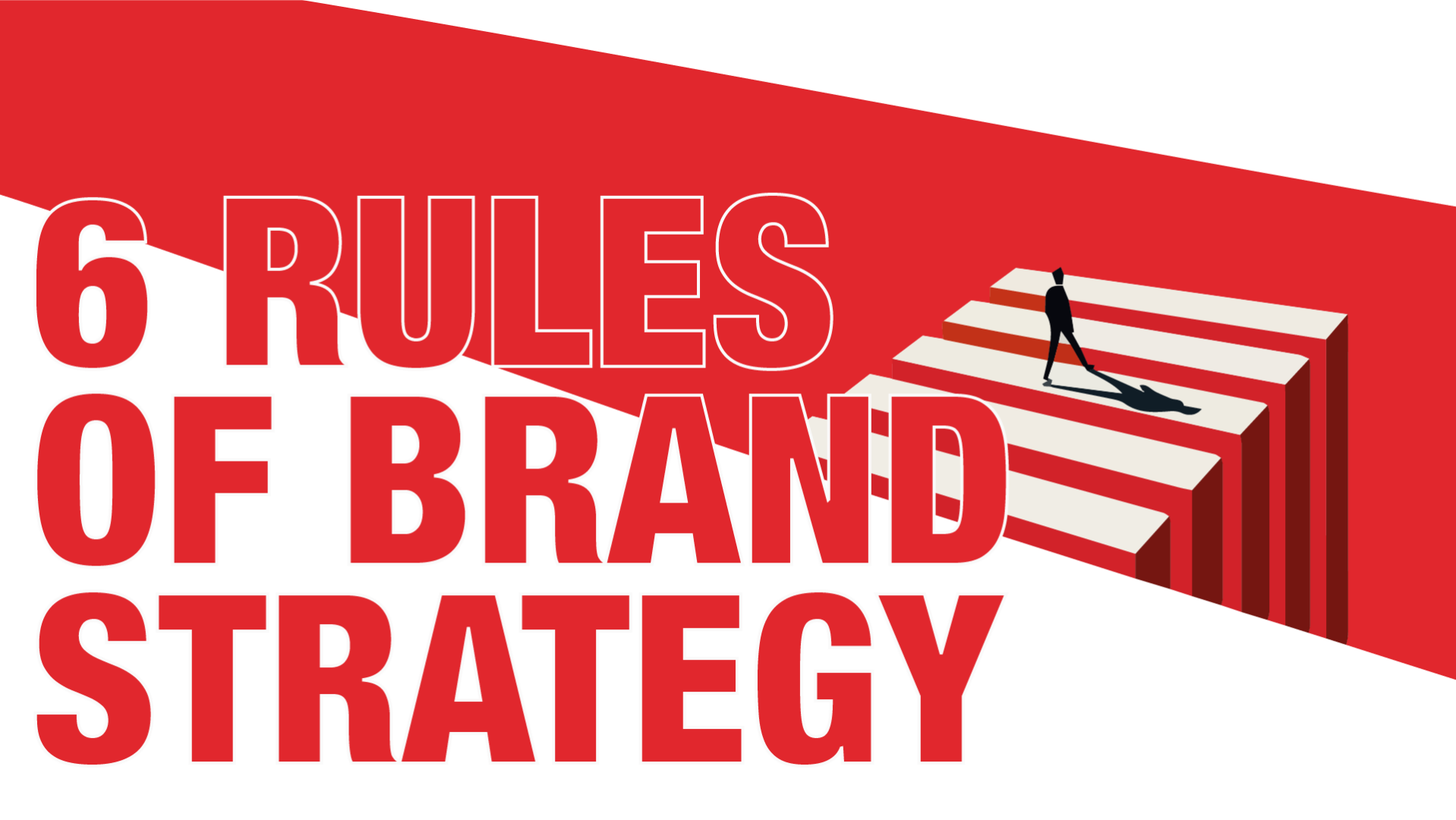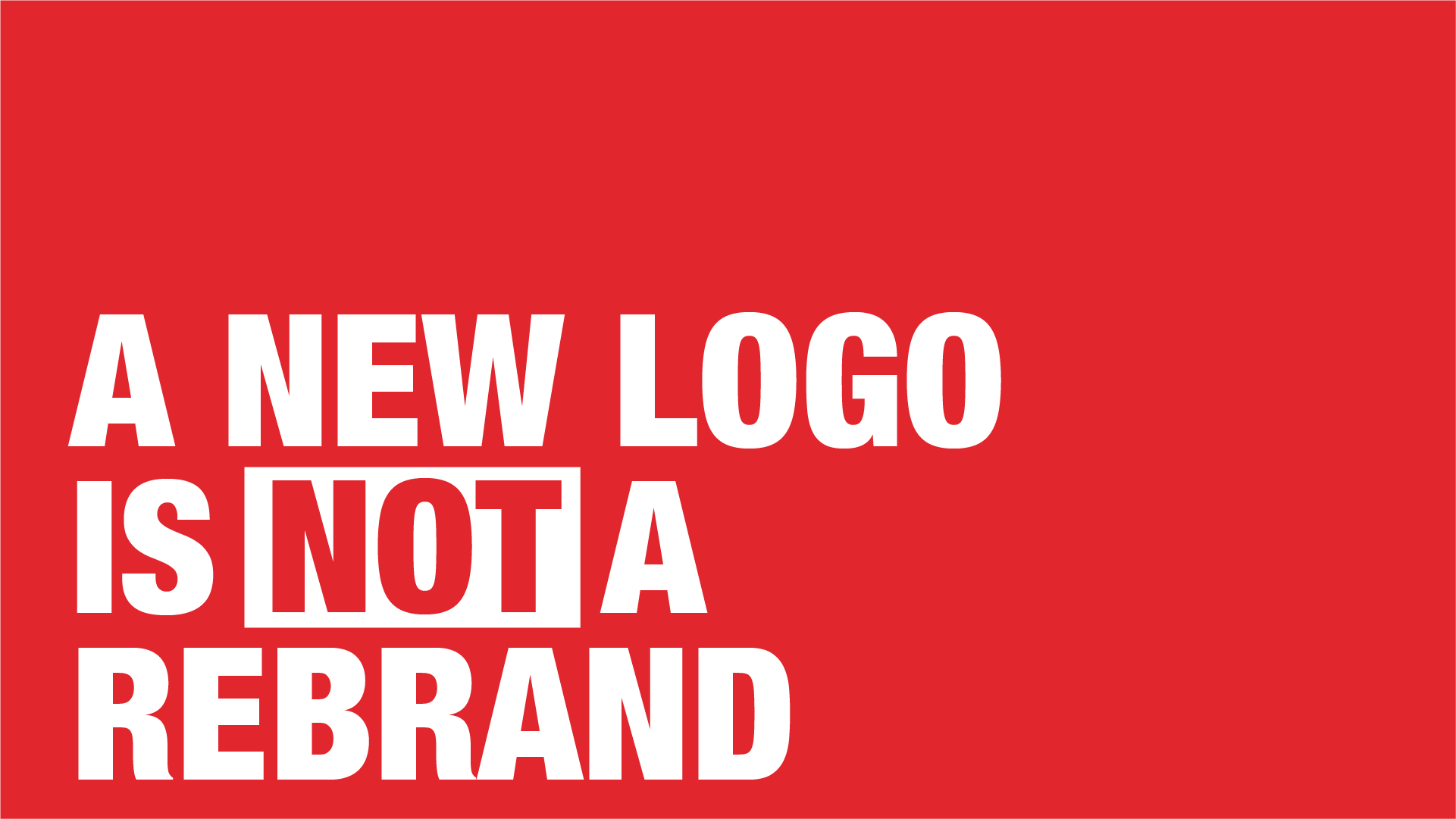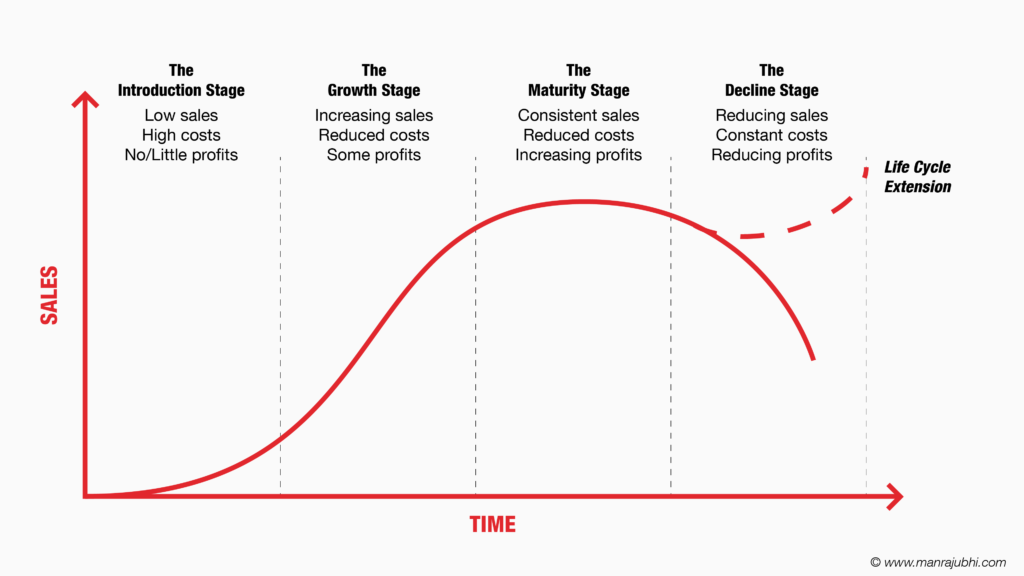
We’re born, we grow, we develop, we mature and in the end, we die. Just like the circle of life, businesses have their own stages of development on their way to success.
These are the basic stages.
I often get into discussions with business owners who believe they start near the peak of the graph. Their only concern is with the numbers, and fail to understand the process of marketing and design. This mentality going forward is never great for any business and sends them towards the Decline stage.
When we talk about the growth of any business, they will all go through these various stages of the business life cycle and inevitably encounter design and marketing challenges along the way. Each encounter will require different marketing strategies when it comes to market penetration.
It is important to understand that your business will constantly change and will require you to be on the ball with your marketing tactics. I’m going to try and explain some of the marketing challenges you can expect to face at various stages of your business’ life cycle.
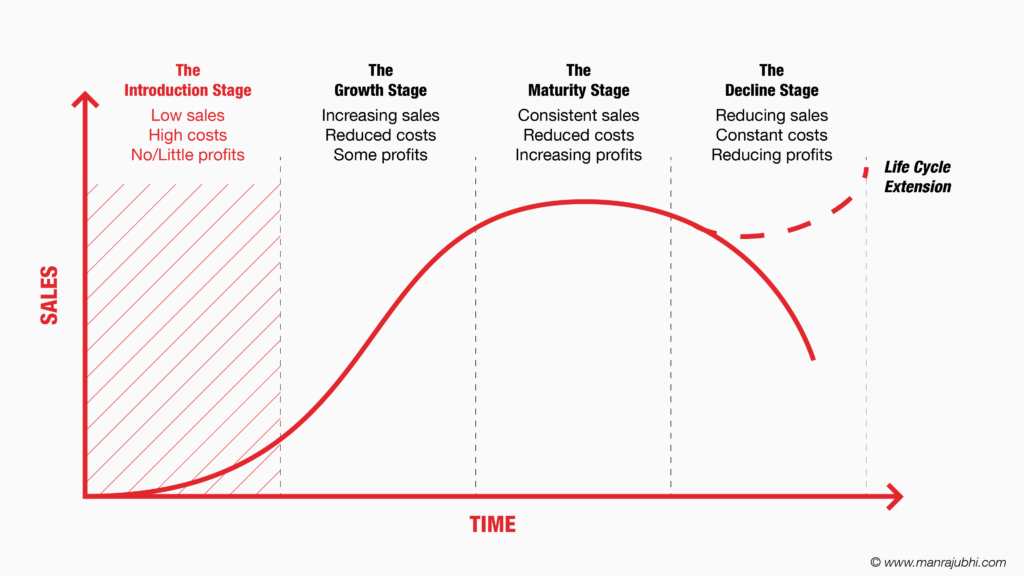
Hello world – The Introduction Stage
The introduction stage is your way of introducing yourself into the market. Your brand, name and product are still unknown and you have to battle your way to be recognised in the market. Sales are low and your early adopter audience is small. This stage is usually the most difficult for a new business owner. The unknown possibility if your company will succeed or fail. So, what is the main focus during this period?
Well, raise awareness. In turn, this will create the trust and the brand recognition for you as an expert. When was the last time you bought a service/product from an unknown company? Probably never right? People tend to stick to companies they know and trust, that’s why when you’re new into the market, it’s important to make people aware of your company and its values.
It can be difficult to know which marketing strategy will produce the best results for your product/service. The best place to start would be research your soon-to-be competitors and their customers’ feedback. You can refer to the 4 Cs model for a customer centric approach:
Customer Value – Is it the value you provide that determines your position in the market?
Cost – Instead of nailing down how much to charge, think about how much your customer has to pay. (remember your audience).
Communication – Customers want to be engaged in meaningful interactions. Don’t spam them with unwanted material.
Convenience – Customers always want the easiest route to their purchase. If you have too many stages towards the purchase, your customers will likely look elsewhere where there is a one-click buy option. Figure out what makes it easy to choose you. Customers are busy people.
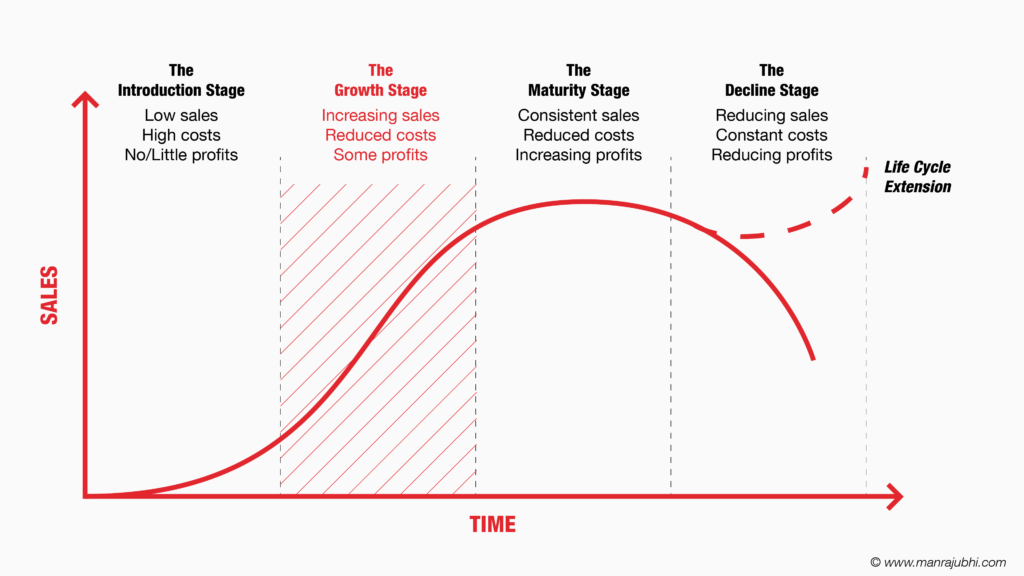
Rising up – The Growth Stage
As time goes by, people will start to learn about your brand and start acknowledging your business and so, let the growth stage commence. If Stage 1 has been tackled correctly, the growth stage is a phase of rapid growth and trying to stabilize your business in the market which leads onto the maturity stage.
This stage is usually low on profit whilst the costs are still high. Why? Well, the main focus of the growth stage is to gain and win market share. Since you’ve established your name in Stage 1, your focus is now to scale up which requires more investment. Investing into a campaign that allows people to think about you when they think about a certain product or service.
This stage isn’t about sitting back and assuming the growth will automatically kick off for you. It’s the perfect time to fine-tune your business plan and implement proven methodologies, sales models, marketing models and operations models before expanding your venture for the mass market. The last thing you’d want is to have a lot of demand and not a way to deal with the production and leaving your customers unhappy and looking elsewhere.
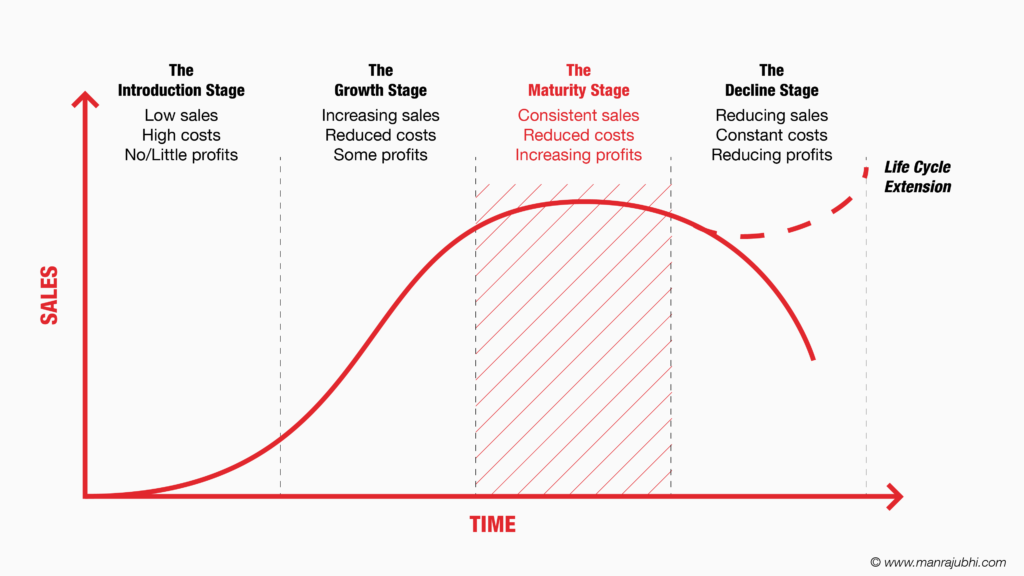
I’ve come and conquered – The Maturity Stage
Here is where everything is ‘okay’. The flat part of the curve is where there is a continuous amount of sales, lower costs and a gradual increase in profits. Marketing in this stage is all about the customer – maintaining the customer relationships. Your business could still be growing but not at the rate it once was. Your options here are to decide whether to take a step back towards expanding again or start to think of an exit strategy.
However, if maintained properly, the maturity stage for a business can last for years (if there is still demand for the products or services it’s providing). It’s often the case where businesses go down the path of innovation to introduce new options to increase customer interest and loyalty to the company. This is probably the most competitive time for most products and businesses to invest wisely into any marketing. Will you be modifying your product/service? Will this give you a competitive advantage?
Look at signs such as a drop in sales, increase in costs and market share loss. If these are ignored, the company will inevitably cease to exist.
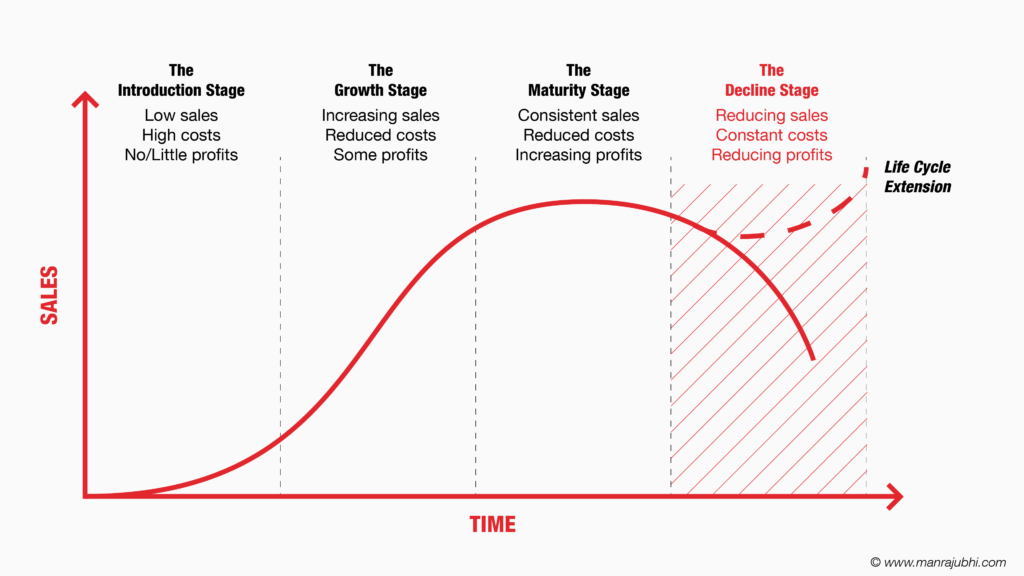
It’s been a good run – The Decline Stage
Running a business is a dynamic process in which you should be fine-tuning and adapting to the financial environment, customer needs and market trends to be able to stand the test of time and be profitable.
Continue to decline and cease to exist or innovate and start a new business life cycle – these are the only two ways it can go.
Decline doesn’t always mean goodbye. The product/service, like i mentioned above, can always be improved or revised and new markets to discover. Every stage of a business brings new or pre-existing challenges. Solutions that may have worked in a previous stage may not work in the next stage. Adjusting your business, marketing and operations plan is always beneficial.
Understanding these stages of any business development helps you adapt your marketing strategy goals to what is current in your market.

